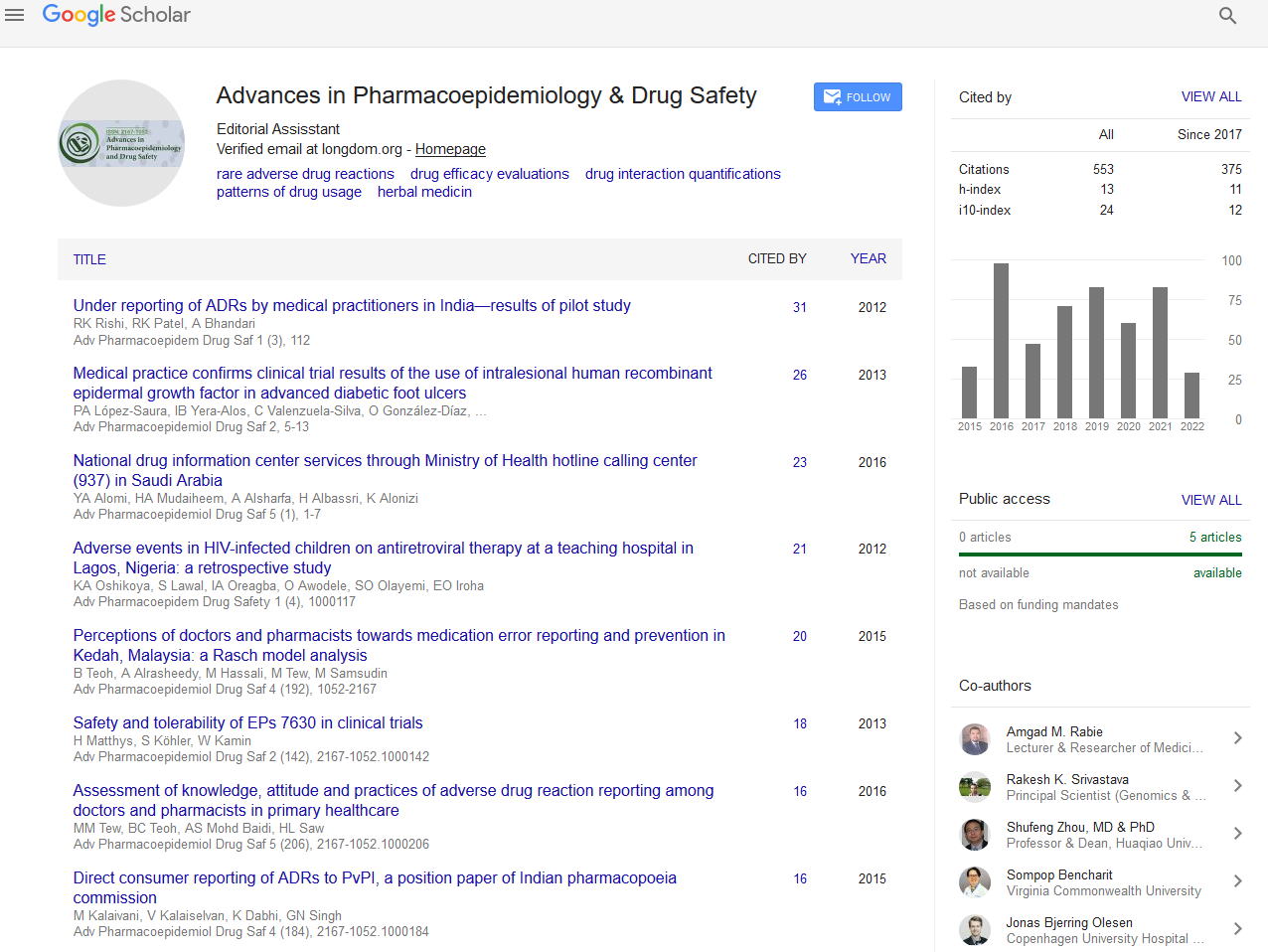Indexed In
- Open J Gate
- Genamics JournalSeek
- Academic Keys
- JournalTOCs
- RefSeek
- Hamdard University
- EBSCO A-Z
- SWB online catalog
- Publons
- Geneva Foundation for Medical Education and Research
- Euro Pub
- Google Scholar
Useful Links
Share This Page
Journal Flyer

Open Access Journals
- Agri and Aquaculture
- Biochemistry
- Bioinformatics & Systems Biology
- Business & Management
- Chemistry
- Clinical Sciences
- Engineering
- Food & Nutrition
- General Science
- Genetics & Molecular Biology
- Immunology & Microbiology
- Medical Sciences
- Neuroscience & Psychology
- Nursing & Health Care
- Pharmaceutical Sciences
Abstract
Study of Oral Acute Toxicity/Pathogenicity of the Tsukamurella Paurometabola Active Agent of the Biological Nematicide C-924 (Hebernem®)
Lizet Aldana Velazco, Dania Bacardí Fernández, Odette Beiro Castro, Dra. Karelia Cosme, Lic. Yamilka Ramírez Núñez, Carmen Valenzuela Silva, Nelson Merino García, Juan Fco. Sánchez de la Morena, Lic Lorelys Milá Cáceres, Téc. Rubén Amaya Izquierdo, Téc. José Suárez Alba, Onelio Carballo, Jesús Mena Campos and Carlos Borroto
The nematodes constitute one of the most phyto-pathogenic species in agriculture, using chemical and biological control agents. The Tsukamurella paurometabola is a bacterial strain with possibilities of being used as a nematicide; thus, it is necessary to evaluate the effect of its administration in lab animals with the objective of estimating its toxicity, infectivity and pathogenicity. To accomplish this aim, it was administered a single dose of 108 ufc/animal with T. paurometabola C-924 in three variants as an active agent, final product (HEBERNEM®) and inactive final product by oral route to Sprague-Dawley rats of both sexes, and their respective placebos. The analyzed variables were: clinical observation, feed and water consumption, body weight, infectivity (tissues, organs and biological fluids), clearing or persistence (faeces collection) and gross and microscopic evaluations of interest organs. The obtained results showed that the administration of this microorganism in their three variants and their placebos, under our experimental conditions, didn’t cause lethality neither influenced on weight, behavior and the physical state in the experimentation animals. The persistence showed that the microorganism was totally eliminated towards the day 15 of the study; likewise the infectivity determinations demonstrated the non-existence of colony formed units of the T. paurometabola in different times of samplings, resulting its inability to invade the guest’s natural barriers, to infect it or to cause pathogenicity. The administration of the T. paurometabola, as an active agent and as final product, didn’t cause signs, infective or pathogenic or toxic reactions in the experimentation animals.


